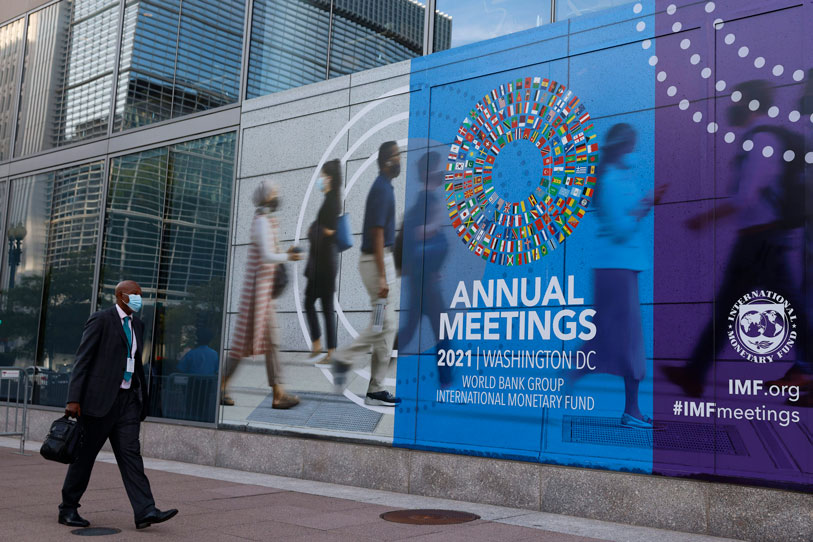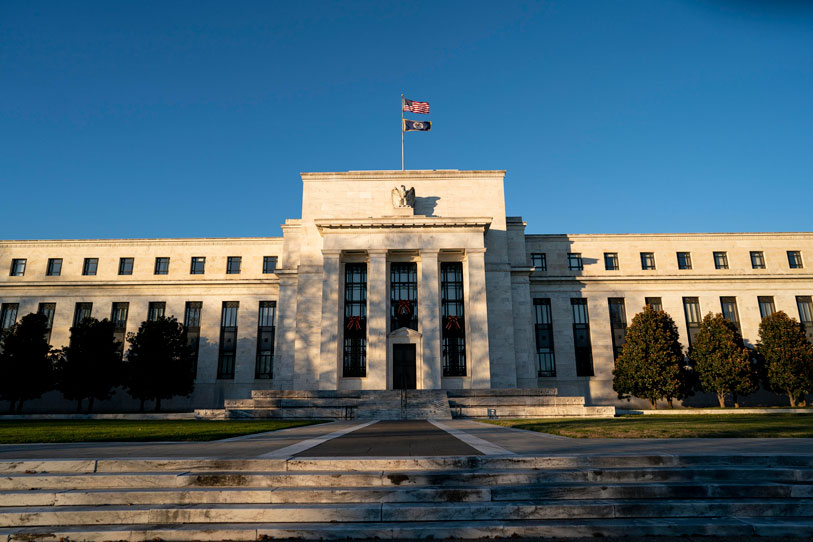27 May 2022
Global growth slows amid uncertainty over war in Ukraine and rising inflation
The IMF's global estimates predict a slowdown in the global economy, which will grow by only 3.6% in 2022. High inflation rates are particularly concerning in the US, where inflation is at its highest level in 20 years. Generali Investments’ new Market Commentary sheds light on the trends of a rapidly evolving economic scenario
The year 2021 was characterised by overall recovery following the Covid-19 pandemic, and 2022 started out promisingly. However, the war in Ukraine changed the state of play, and has led to a downward revision of global growth estimates for 2022.
According to the International Monetary Fund’s (IMF) April edition of the World Economic Outlook, growth will decrease from an estimated 6.1% in 2021, to 3.6% in 2022 and 2023, respectively 0.8 and 0.2 percentage points lower than predicted before the Russian invasion of Ukraine in January. Beyond 2023, IMF experts say that global growth is expected to fall to about 3.3% in the medium term and, as a result of war-induced commodity price increases and rising price pressures, the inflation rate in 2022 is estimated at 5.7% in advanced economies, and 8.7% in emerging markets and developing economies. This is 1.8 and 2.8 percentage points higher than last January's projections, respectively.
Consequently, the IMF warns that it will be essential to implement multilateral efforts in order to respond to the humanitarian crisis, prevent further economic fragmentation, maintain global liquidity, manage debt distress, address climate change and end the pandemic.

However, even before the war in Ukraine, global recovery was expected to continue growing, but at a slower pace than in 2021, as discussed in Generali Investments' analysis for its “Outlook 2022: Bye Bye Beta”. Since many economies have recovered the ground lost to the pandemic, the report stated, governments and central banks will begin to withdraw their support, albeit cautiously. Consumption, which is cushioned by high savings, will remain the backbone of recovery, and CapEx1 is set to grow, especially in the US, as it is supported by favourable financial conditions. Supply disruptions will gradually ease, and a shift will be seen in consumption towards newly reopened services, such as tourism and hospitality, which will prolong the recovery.
The report warned that political risks could cause financial chaos (as later demonstrated by the events that unfolded in Ukraine), complicating the outlook even further. The forecasts contained in Generali Investments’ analysis, which was published before the Russian invasion of Ukraine, also proved to be correct in other respects. The report emphasised the need to avoid a disorderly energy transition that would lead to a surge in the prices of certain raw materials and warned that a new vaccine-resistant variant would also be dangerous. In particular, persistent peaks in inflation could undermine expectations of inflation trends, especially in the US, which would lead to a tighter monetary policy, while high price pressure is eroding real disposable income.
Inflation up again. Generali Investments’ new analysis
In light of the latest developments, Generali Investments has therefore updated its analyses, focusing in the most recent Market Commentary released in May on inflationary scenarios and the measures that will likely be taken in the near future to reduce their risks.
High inflation has been caused by commodity prices soaring worldwide, since Russia and Ukraine are both important sources of crude oil and gas, raw materials, and grain. This problem is particularly affecting the world's leading economy, the United States, where the Federal Reserve (Fed) recently raised its benchmark rate by 50 basis points for the first time since 2000 and warned of further inflationary pressure as a result of the war in Ukraine and the standoff in China. In addition, it outlined plans for a balance sheet contraction that is roughly twice as fast as the previous quantitative tightening.
While highlighting once more the risk of higher inflation, the Fed expressed confidence in the strength of domestic demand and the labour market. With the lowest employment rate in five decades, strong wage growth, and almost two jobs available per every unemployed person, the Fed was reasonably confident that it would be able to reduce inflation without hurting the economy, which is why it will quickly move rates to the neutral level (2 to 3%), and then decide whether to tighten further.

As for the European Union, the IMF announced in its World Economic Outlook that it does not foresee a recession in the eurozone in the near future and, in its latest report on the world economy, downgraded the growth forecast in the area to 2.8% this year, and 2.3% in 2023. The estimates for China, Japan and India were also revised downwards, due to the impact of the war in Ukraine and other factors. The corrections for Japan and India were more significant and attributed to weaker domestic demand - due to the impact of higher global oil prices on private consumption and investment - and a decline in exports.
China, on the other hand, is expected to be affected by the strict “zero tolerance” strategy adopted in order to contain the coronavirus, and the contraction of investment in real estate. The country is expected to grow by 4.4% in 2022, down from 8.1% in 2021, and 5.1% in 2023. The forecasts for 2022 and 2023 are slightly lower than the January estimates of 4.8 and 5.2% respectively.
In short, the general trend is towards a slowdown in growth. Despite the deceleration in the short term, there should be no risk of recession in the long term. In the current scenario, however, any economic forecasts should be carefully considered, as the situation remains fluid and, consequently, the spectrum of possible scenarios is broad - all the more so when one considers the difficulties that might arise due to the negative effects of international tensions and the uncertainties they bring with them. With outcomes that are sometimes difficult to predict clearly.
1 Capital Expenditures (CAPEX) represent cash outflows for the realisation of investments in fixed assets of an operational nature.
